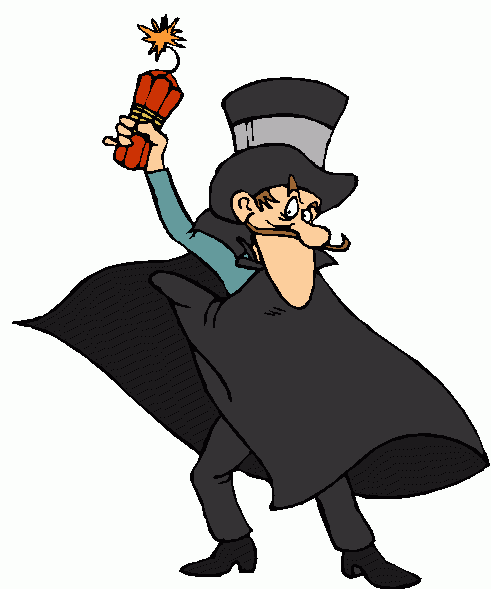Antagonistic by giraffmang |

All good stories need conflict, there is little debate about this fundamental attribute in storytelling. There are numerous ways to induce this conflict. One of the key ways of doing so is the use of an antagonist or villain. These terms are generally portrayed as being interchangeable, but they’re not. It is true that, in certain circumstances, they can be one and the same, but it isn’t always the case. And, as a good writer, you need to determine which is best for your story. So, what’s the difference? The Antagonist. This is the character or force that actively works against the protagonist (main character). The easiest way to picture them is to think of them like a roadblock with a clear purpose and well-defined reasons for their choices and actions. The antagonist may be an institutional force, such as a governmental agency, or an individual, such as a villainous mentor or a romantic rival. Antagonists can also be nature itself, such as a hungry animal, severe drought, or a raging tsunami. Not only does the antagonist provide tension and conflict, they can also help to create a stronger sense of empathy for the main character by highlighting their resilience, strength and determination. The important thing to consider with the antagonist is that whilst they may cause considerable difficulty for the protagonist, they are not necessarily bad people. Antagonists play an essential role in making the story memorable. The Villain. A villain tends to be more of an amoral or, indeed, evil character with scant regard for the general welfare of others. They tend to be driven by greed, lust or the desire for power or revenge. The villain typically uses underhanded and nefarious methods (treachery, deception, or violence) to achieve their goals. On the surface, villainous characters may come across as simplistic or one-dimensional, but they can be complex and sympathetic if written well. It may well be that the villain is the only one who understands the true nature of the conflict. This can make for a compelling and thought-provoking story. Are All Villains the Antagonist? The use of villains can be a great addition to the storytelling process. They quickly add conflict, tension, and suspense due to their lack of morals and self-serving attitudes. In some stories, the villain will clearly be the antagonist, but this isn’t always the case. Whilst many will stand directly in the way of the protagonist, sometimes the roles are more blurred. They may not be an active force working against the hero but may have goals of their own and motivations which work in parallel to that of the main character. Are All Antagonists the Villain? In any good story, there is typically a protagonist and an antagonist. The protagonist is the main character of the story, while the antagonist is the opposing force. They provide conflict and help to drive the story forward. However, not all antagonists are villainous. In some cases, the antagonist may simply disagree with the protagonist or pose a challenge. They might even share the same goal but have different methods to reach it. In conclusion While antagonists and villains are cut from the same cloth, they aren’t necessarily the same. To clarify, here are some popular examples of each. An Antagonist and a Villain In the movie ‘Die Hard,’ Han Gruber is a classic villain who is also the main antagonist. The character is intent on harming others for his own benefit. He is strongly motivated by greed (the theft of the money in the plaza vault) and he’ll stop at nothing to get it. An Antagonist but Not a Villain In ‘The Fugitive,’ US. Marshal Sam Gerard is a textbook antagonist. He works directly against Richard Kimble’s escape attempts and spends the whole movie tracking him down because it’s his job to do so. There are no ulterior motives, and it isn’t personal, he’s just really good at what he does. He’s bringing a known fugitive to justice. He is by no means a villain. A Villain but Not an Antagonist In ‘American Psycho,’ Patrick Bateman is not only a terrifying serial killer but the protagonist. He is clearly evil and motivated to harm others, but the main antagonist working against him is Donald Kimball, a police detective and a good man, simply trying to solve a case.
|
| ©
Copyright 2025.
giraffmang
All rights reserved. giraffmang has granted FanStory.com, its affiliates and its syndicates non-exclusive rights to display this work. |



